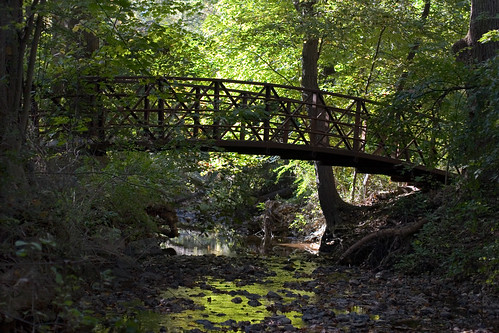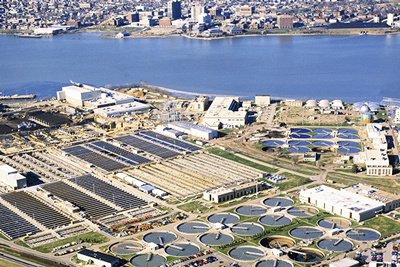
You get into a lot when you get into a boat. Too
many recreational boat captains do not appreciate how tricky the water can be until they get into a jam. What they do then may cost them their lives, or save it.
So Many Lessons In Tragedy
Anthony Brown of Silver Spring, Maryland, commander of Potomac River Power Squadron, suspects that less experienced power boaters think of their vessel the way they think of their car. That thought occurred to him when he read Nick Schuyler's account of the tragic accident that took the lives of two NFL players as told in Schuyler's book
Not Without Hope. Victims of the February 2009 Gulf of Mexico accident were pro football players Marquis Cooper and Corey Smith, and Will Bleakley, a friend of Schuyler. Cooper was the owner and skipper of the 21-foot boat.
Cooper's anchor snagged on something on the seabed. Unable to get it up, the group tied the anchor line to the stern of the boat and tried to pull the anchor free. That's a big no-no, according to Brown. The dangers of tying off the anchor to the stern of a boat is one of the early lessons students are taught in the Power Squadron's Seamanship course. In Cooper's case, the anchor did not give way. Instead, the stern was pulled under water swamping the boat. The four men were thrown overboard as the boat capsized.
Brown suspects that the group thought of the boat as a tow truck. Faced the same situation a week before the accident, Cooper did one of the smartest things a skipper can do when an anchor can't be unsnagged. He cut the line, sacrificing the anchor for the safety of the boat and passengers. Schuyler says Cooper was determined not to lose another anchor.
Boat Handling Is A Skill
Chris Pickwick, of Adelphi, Maryland, a squadron past commander and boating instructor, says the incident forcefully illustrates the need for safe boat education and how to handle unexpected boating situations even when on a simple fish
ing trip.
"
The United States Power Squadrons and a number of other private and state organizations offer safe boating education. This training would have been helpful for the four football players aboard a 21 foot boat who experienced a boating accident 75 miles from shore in the middle of Winter.
"After taking such a course, these boaters would have known that four big men on a small boat might have at least made the boat unstable if not overloaded according to the boat's U.S. Coast Guard Maximum Capacities Vessel Plaque. They would also have been aware that standing on the boat’s rear deck would contribute to its instability as would surging the engine. They would also have known not to anchor from the stern as this also drags down the lowest part of the boat. These boaters would have known the proper way to free the anchor, and the need to make a float plan in case of emergency.
"Other courses offered by the Power Squadrons such as Seamanship, Piloting, Advanced Piloting, and Weather would have offered them further instruction them on how to plan a safe trip, how to handle the boat in heavy weather, the need to monitor the weather and to call for help before it was too late and the best way to manage hypothermia once in the cold water."
Schuyler is the lone survivor of the accident and the only one with a first-hand description of what happened. He is not an experienced boater, so Brown is not sure that Schuyler has the best grasp of Cooper's action. But the story itself is a cautionary tale for recreational boaters.
What's A Recreational Boat Captain To Do?
Recreational boat captains have fewer hours on the water than commercial captains or watermen. They are not required to meet commercial certification nor even have nautical charts on board. Sooner or later says Brown, every skipper must decide whether he is a boat driver or pilot.
For Brown, that was easy. He was looking for a way to reassure his non-boating, non-swimming passengers that it would be OK cruise with him. He took the Power Squadron's Safe Boating and Seamanship course before operating his boat. "I spent the equivalent an hour of class room time for every two hours of on-water time in my first year boating."
Organizations like the Coast Guard Auxiliary, community colleges and State authorities offer boating safety courses. Commercial schools go beyond that, but target their offerings to those who want a commercial captains license.
The Power Squadrons may be the only group that certifies recreational boat skippers as having a body of knowledge in piloting and seamanship.
Skippers who take the Power Squadron curriculum from Seamanship, Piloting, Advanced Piloting to Navigation would be able to plot a course anywhere in the world as long as they have the proper charts, a sextant and a GPS. They would also be exposed to what can go wrong during a voyage and how to cope with it.
Know Before You Go
"All of boating is based on maritime practices and traditions" says Eugene Roberson, Mitchellville, Maryland, Potomac River's safety officer. Roberson points out that the captain of the Titanic was an experienced seaman, yet he sunk his ship. Boating is fun, but anything can happen on the water.
There's more to learn than safe boating, adds Roberson. Boating demands more self-sufficiency than does driving. The captain needs to know his mechanical and electronic systems. There's no pulling over if your boat breaks down in the middle of the Chesapeake Bay. "Boating education saves money as well as lives."
About The Power SquadronsPotomac River Power Squadron is one of over 450 local affiliates of United States Power Squadrons, the world's oldest and largest non-profit volunteer boating organizations. Potomac River Power Squadron was founded in Washington, D.C. in 1915 and is a 501c(3) non-profit educational organization. It's members volunteer their time on boating safety and education as a civic service. Most members boat on the Chesapeake Bay or Potomac River, but live in suburban Maryland or the District of Columbia.
Potomac River is one of four squadrons active in the Washington, D.C. metropolitan area. The others are based in Rockville, Maryland, Northern Virginia and Mid-Potomac, centering on the Occoquan and Potomac Rivers.
The Power Squadrons offer a safe boating course that meets the requirements of the
National Association of State Boating Law Administrators. The squadrons offer advanced classroom courses on boating. Its members volunteer to offer courtesy Vessel Safety Checks for non-commercial boats and perform other civic services around boating. United States Power Squadrons has been honored by four U.S. presidents for its boating safety and education programs.













